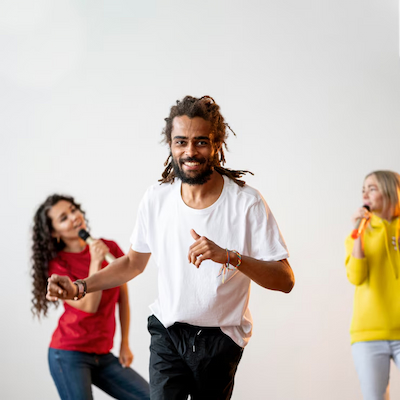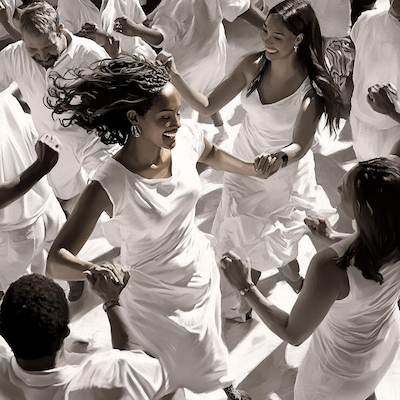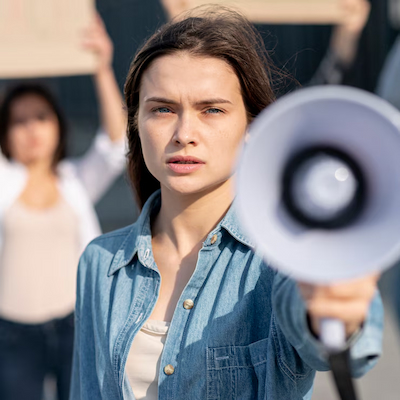
Performance as an art form has become a powerful tool for social and political critique, especially in public spaces. These accessible locations offer an ideal platform for artists and activists to express their views, question societal norms, and provoke reflection on contemporary issues. By using the body and action as means of communication, performances can capture the attention of passersby and deliver a message that often goes beyond what words can convey.
Furthermore, performance in public spaces not only challenges the status quo but also engages the community in ways that other art forms may not. The direct interaction between the artist and the audience creates a dynamic environment where ideas can be discussed and debated. This approach enriches the artistic experience and fosters a sense of collectivity and belonging, which is essential for building a more critical and conscious society.
How Performances Work as Social and Political Critique
Performances as social and political critique function through a combination of artistic, social, and contextual elements. First, selecting the right public space is essential. It should be a location where the performance’s message can be easily accessed and understood by as many people as possible. The artist must consider the surrounding environment, the characteristics of the space, and the audience that frequents it to maximize the intervention’s impact.
Another crucial aspect is having a clear theme and message. The performance should be built around relevant social or political issues that resonate with the public and stimulate reflection. This could include topics such as social inequality, human rights, environmental concerns, and more. Clarity in messaging ensures that the performance not only entertains but also informs and generates meaningful discussions.
Community involvement is central to the effectiveness of these performances. Engaging local community members in the creative process enriches the performance and makes it more representative of local voices. This can be achieved through workshops, meetings, or direct collaborations where participants share their experiences and help shape the narrative of the performance.
Finally, evaluating the impact of the performance is key to understanding its effectiveness. By collecting feedback from the public and observing their reactions, artists can learn what worked and what can be improved in future interventions. This feedback is vital for artistic growth and for strengthening the role of performance as a form of social and political critique.

Advantages of Using Performance as Social and Political Critique in Public Spaces
Using performance as a form of social and political critique in public spaces offers several key advantages that can enhance the message and its impact. First and foremost, accessibility is one of the major benefits. By performing in public areas, artists reach a wide audience, including those who may not typically attend galleries or theaters. This democratizes art and makes it more inclusive, allowing diverse voices to be heard.
Another advantage is the ability to generate dialogue and interaction. Performance in public space invites the audience to participate actively—whether through reactions, conversation, or direct engagement with the artists. This dynamic creates a space for exchange, where people can discuss and reflect on the presented issues, encouraging community connection and civic engagement.
Additionally, performances have a unique ability to evoke strong emotions and deep reflection. The use of the body, voice, and movement enables messages to be conveyed in visceral ways, reaching people on emotional levels that other forms of communication may not. This emotional connection can serve as a powerful catalyst for social change, inspiring the audience to take action or rethink their beliefs and attitudes.
Lastly, performance as social critique can be an effective way to draw attention to urgent issues. In an information-saturated world, artistic interventions in public space can stand out and leave a lasting impression. The uniqueness and creativity of performances draw attention, spark curiosity, and often lead to increased awareness of important topics.
How to Carry Out Performances as Social and Political Critique in Public Spaces
Carrying out performances as social and political critique in public spaces requires careful planning and a strategic approach. The first step is selecting an appropriate public space. This involves not only choosing a location but also considering the social and political context of the area. Plazas, parks, busy streets, and even public buildings can all be suitable depending on the message. The space should provide visibility and accessibility to ensure the performance reaches as many people as possible.
Defining the theme and message is the next essential step. Artists should choose topics that are relevant and resonate with the audience in that space. These may include civil rights, environmental protection, or gender equality. Clarity in the message is fundamental so that the public can understand the purpose of the performance and feel encouraged to reflect on the issue.
Involving the community in the process is a powerful strategy for enhancing the performance. This can be done through workshops where local participants are invited to share their stories and contribute ideas. Such collaboration makes the performance more authentic and fosters a sense of ownership and engagement. When people feel part of the process, they are more likely to participate and support the cause.
The use of visual and auditory elements is a powerful technique to increase impact. Costumes, props, music, and other sensory elements can create a more immersive and memorable experience for the audience. These elements help to convey the message more effectively and draw the attention of passersby, encouraging them to stop and engage.
Promotion and outreach are crucial to ensure the performance reaches a broader audience. Social media, flyers, and partnerships with local organizations can help boost visibility. Building anticipation before the event can increase participation and engagement with the message.
Lastly, assessing the impact of the performance after it concludes is essential. Gathering audience feedback, recording their reactions, and analyzing interactions can provide valuable insights into the effectiveness of the piece. This evaluation helps artists refine their work and informs future projects, contributing to the ongoing development of the art form.

Did You Enjoy Learning About Performance as Social and Political Critique in Public Spaces?
Performance as a form of social and political critique in public spaces is a powerful artistic expression that challenges norms, sparks reflection, and engages the community. By using the body and action as tools for communication, artists create memorable experiences that resonate with audiences and encourage meaningful dialogue.
If you found this topic interesting, there are many ways to learn more or even get involved. Attend local events, connect with artists working in performance, and consider how you too can participate in conversations and actions that promote social change through art.
Frequently Asked Questions
What is Performance as social and political critique in public spaces?
It is an art form that uses the body and action to protest and raise questions about social issues in public places.
How can Performance impact society?
It makes people think, feel, and act. Watching a performance can shift your opinion and inspire others to get involved.
What kinds of spaces are used for these performances?
Anywhere! Squares, streets, parks, and even public buildings. What matters is that the location has public visibility.
Who can participate in a Performance as social and political critique?
Anyone! If you have a message to share, you can join artists and activists and become part of the movement for change.
Why is Performance a powerful form of protest?
It’s visual, impactful, and accessible. People stop and pay attention, which helps your message be seen and heard.

